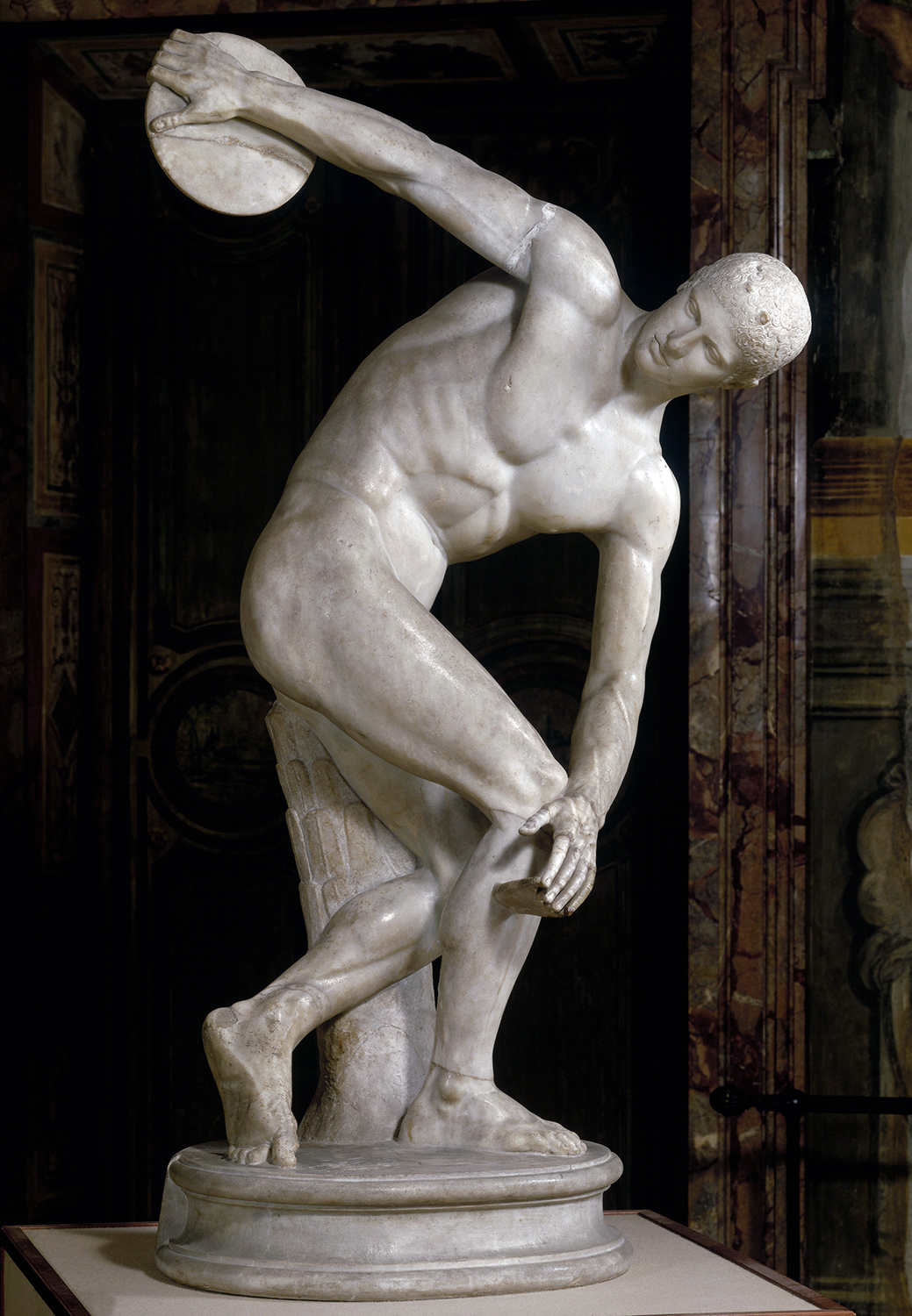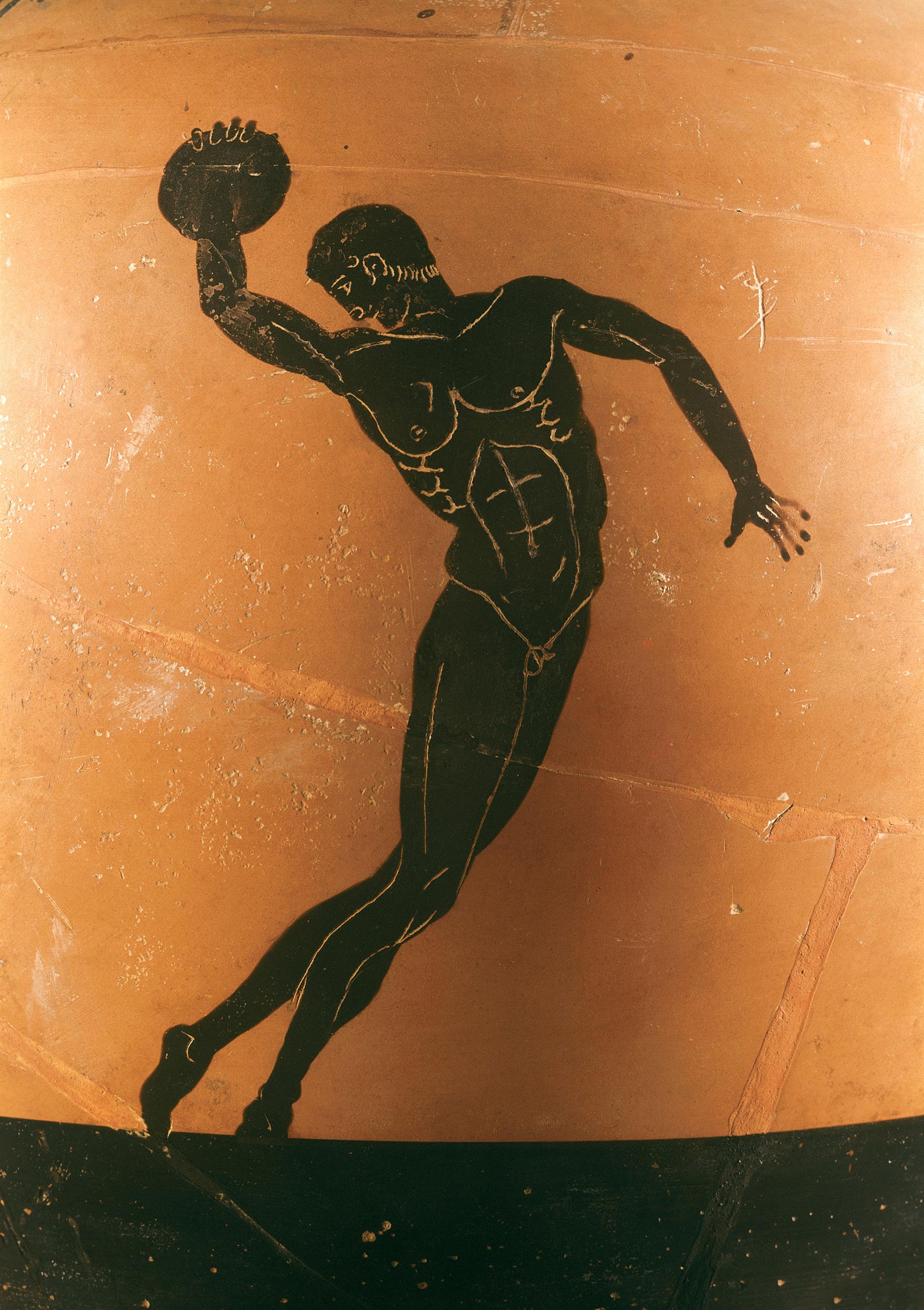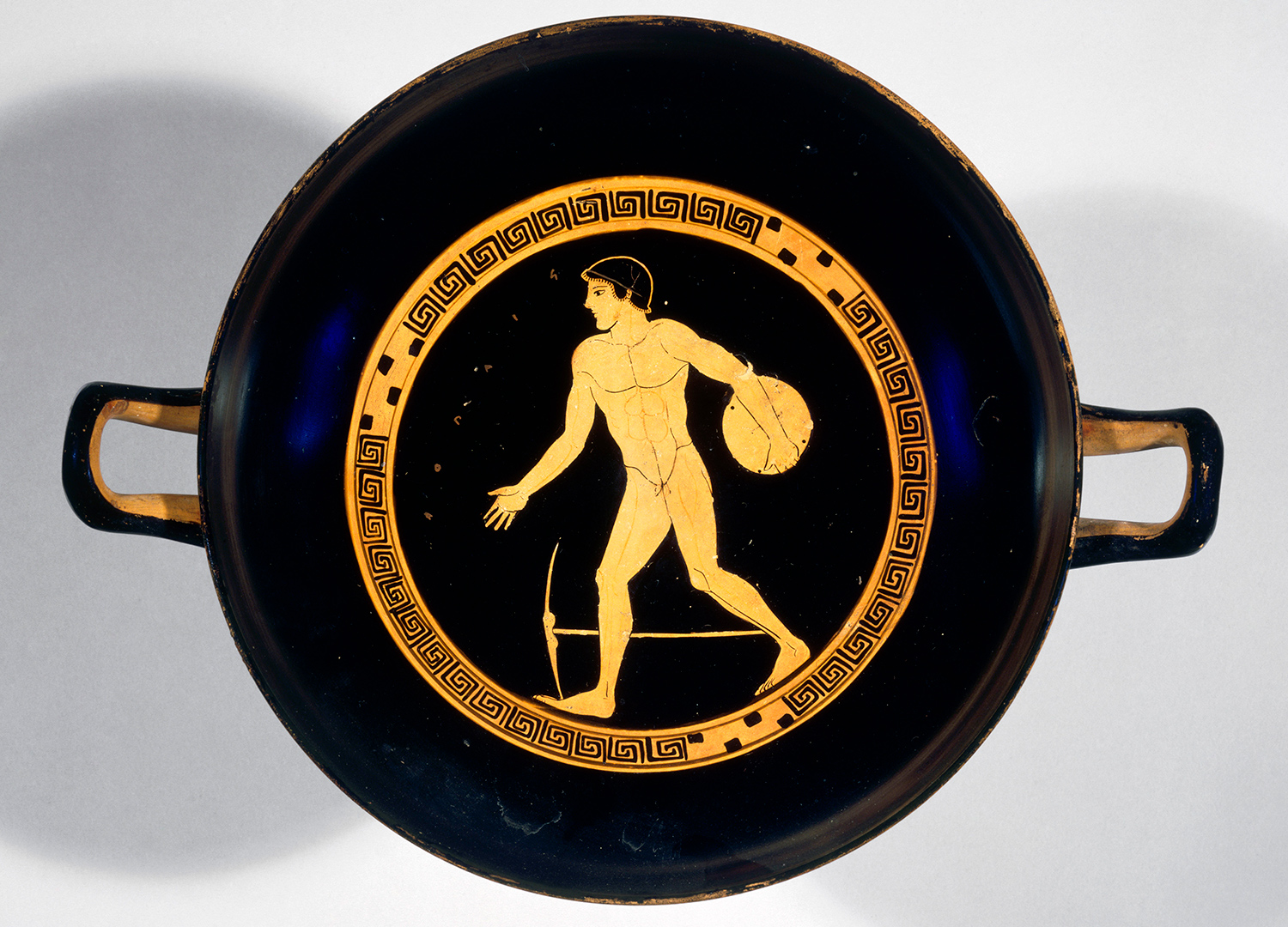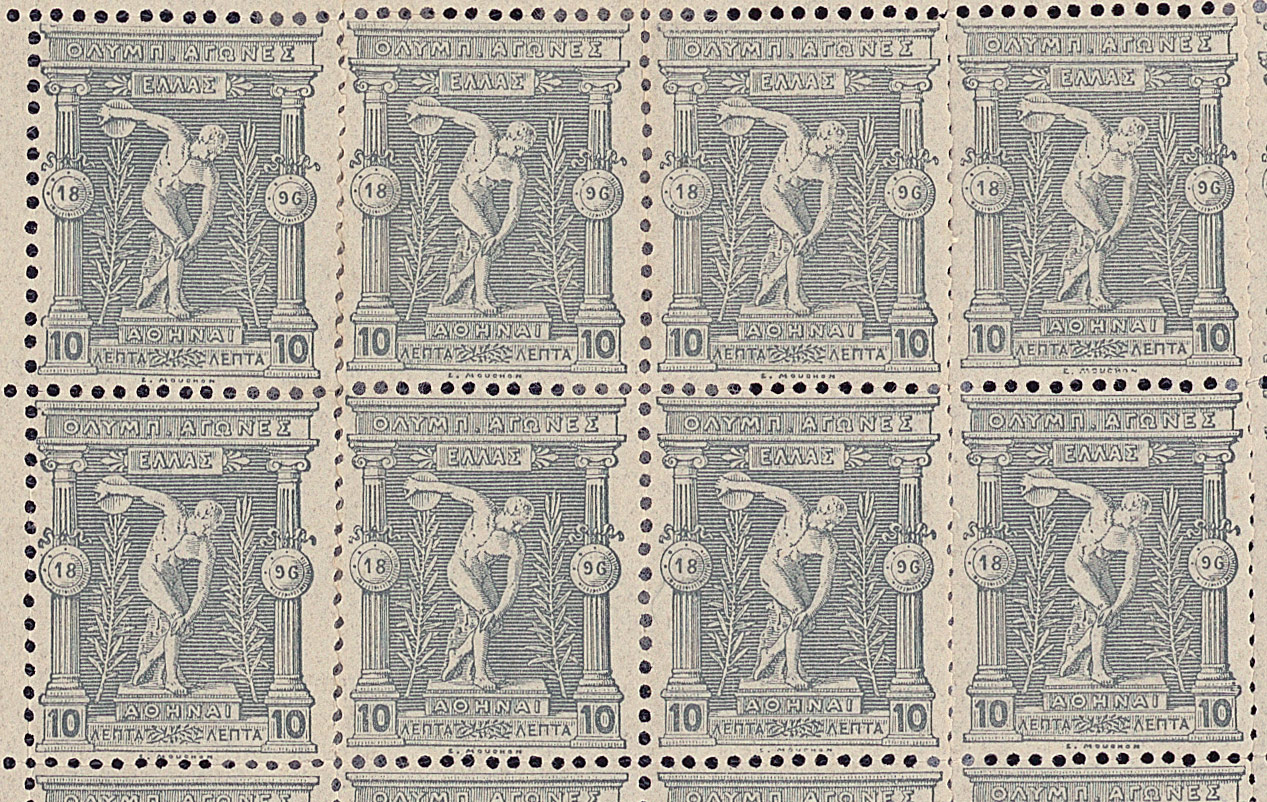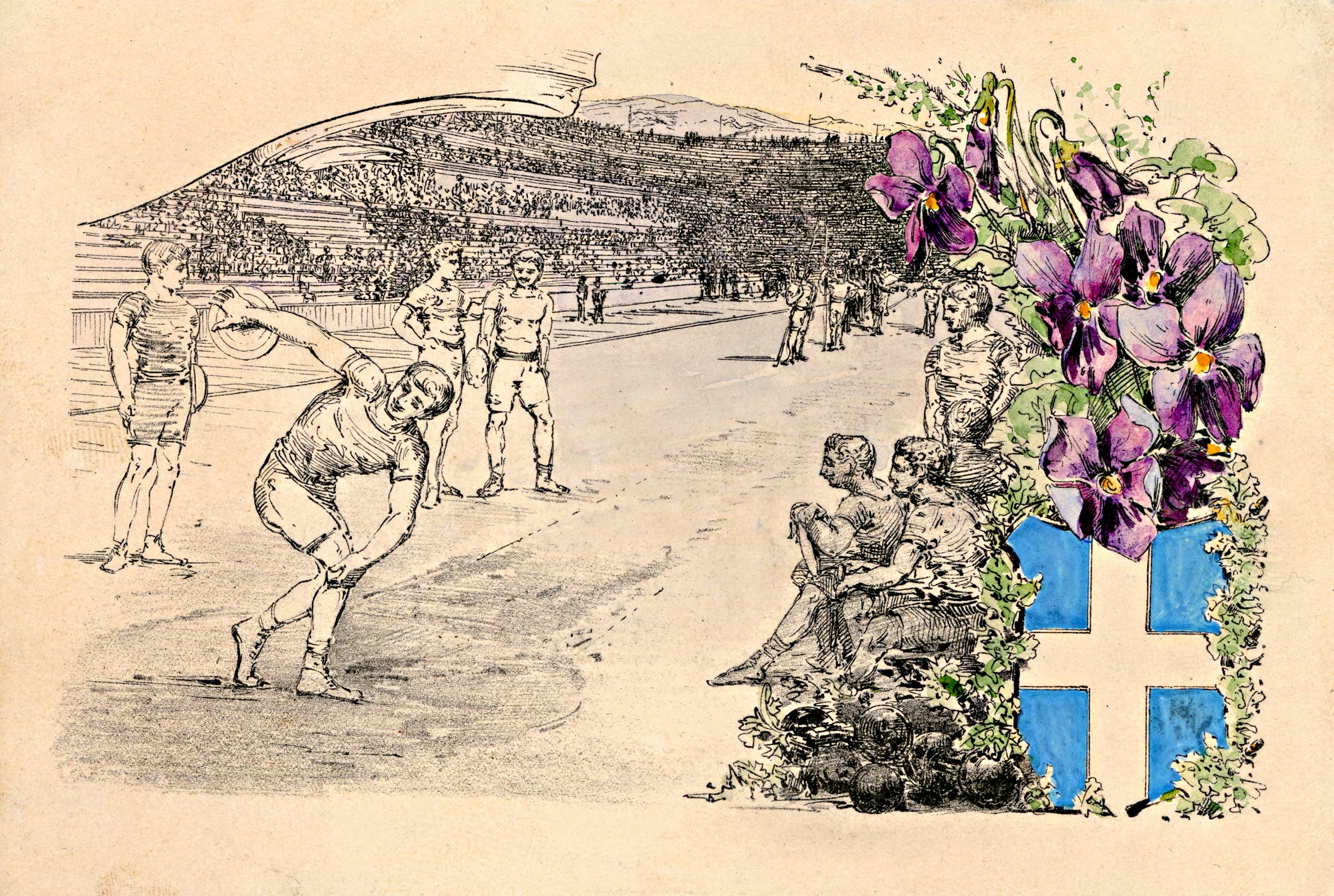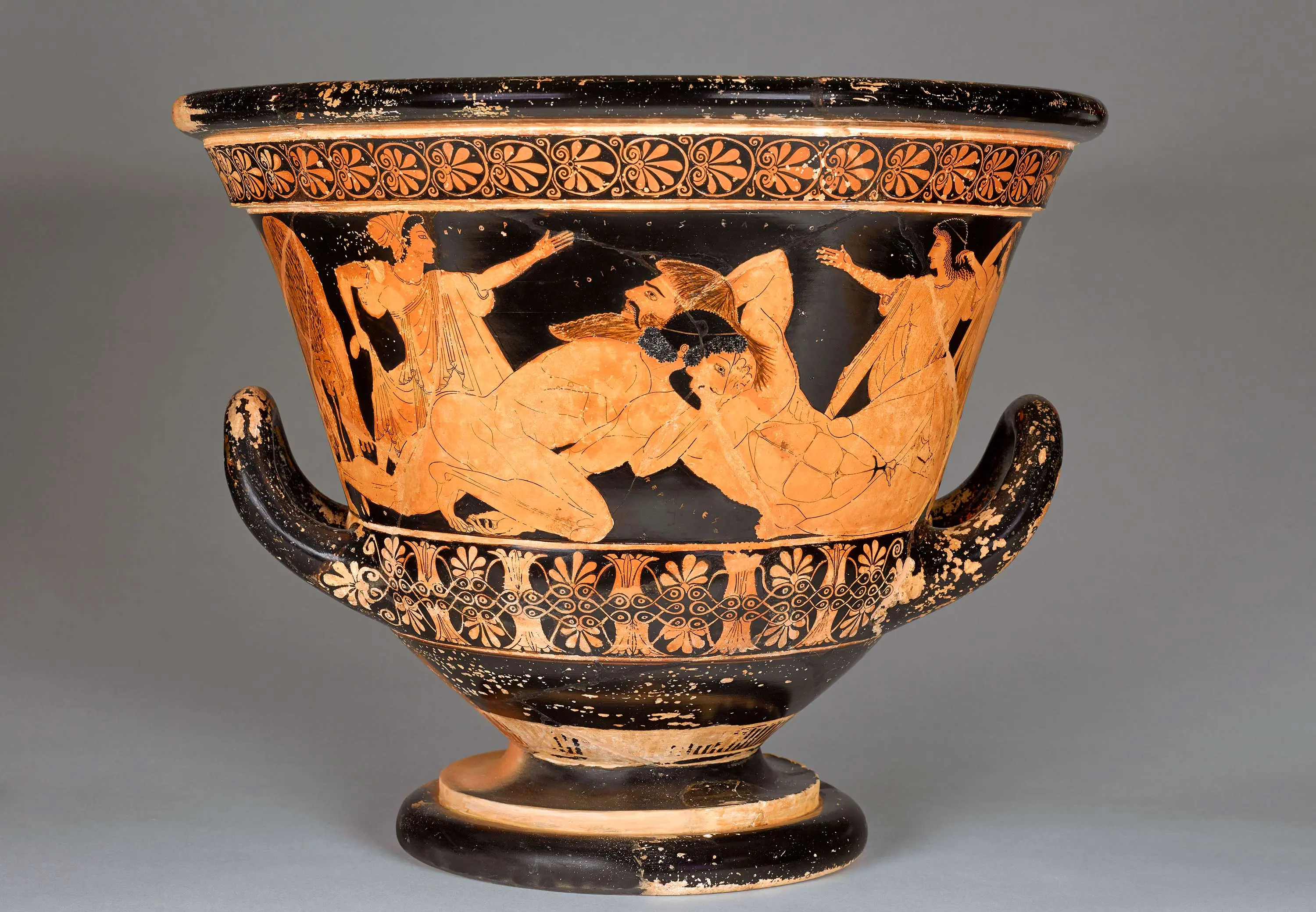
L’Olympisme
24 avril – 16 septembre 2024
Le Discobole de Myron, un symbole olympique incontestéD’après Myron,
Discobole
Moulage, tirage intégral d'une copie d'après l'original grec, en bronze, de Myron (460-450 avant J.-C.)
Fin du XIXe siècle
Montpellier, musée des Moulages
Nous ne connaissons le Discobole du sculpteur grec Myron que par des copies, principalement en marbre. Cette célèbre statue, originellement en bronze, représentait un lanceur de disque en pleine action. Elle hérite du « style sévère », qui se caractérise dans la décennie 460-450 par une grande sobriété, par une représentation anatomique des corps humains et par des visages impassibles contrastant avec les visages souriants de la période archaïque. Mais déjà, en ce milieu du Ve siècle avant J.-C., cet athlète sans pareil fait partie des œuvres qui inaugurent la sculpture grecque classique.
Quand le « style sévère » devient classique
Fermement campé sur sa jambe droite repliée qui lui sert de point d’appui, tandis que son autre jambe ne touche le sol que par la pointe des orteils, le discobole effectue le geste de balancement du disque caractéristique de ce sport dans l’Antiquité. Il est sur le point d’entrer dans un mouvement d’extension explosive accompagnée d’une rotation qui va permettre la propulsion du disque. Si l’œuvre garde du « style sévère » une certaine stylisation des muscles du torse et une composition bidimensionnelle qui pourrait l’apparenter à un haut-relief, l’illusion du mouvement et le rendu de l’anatomie du personnage instaurent déjà les canons de beauté du classicisme grec.
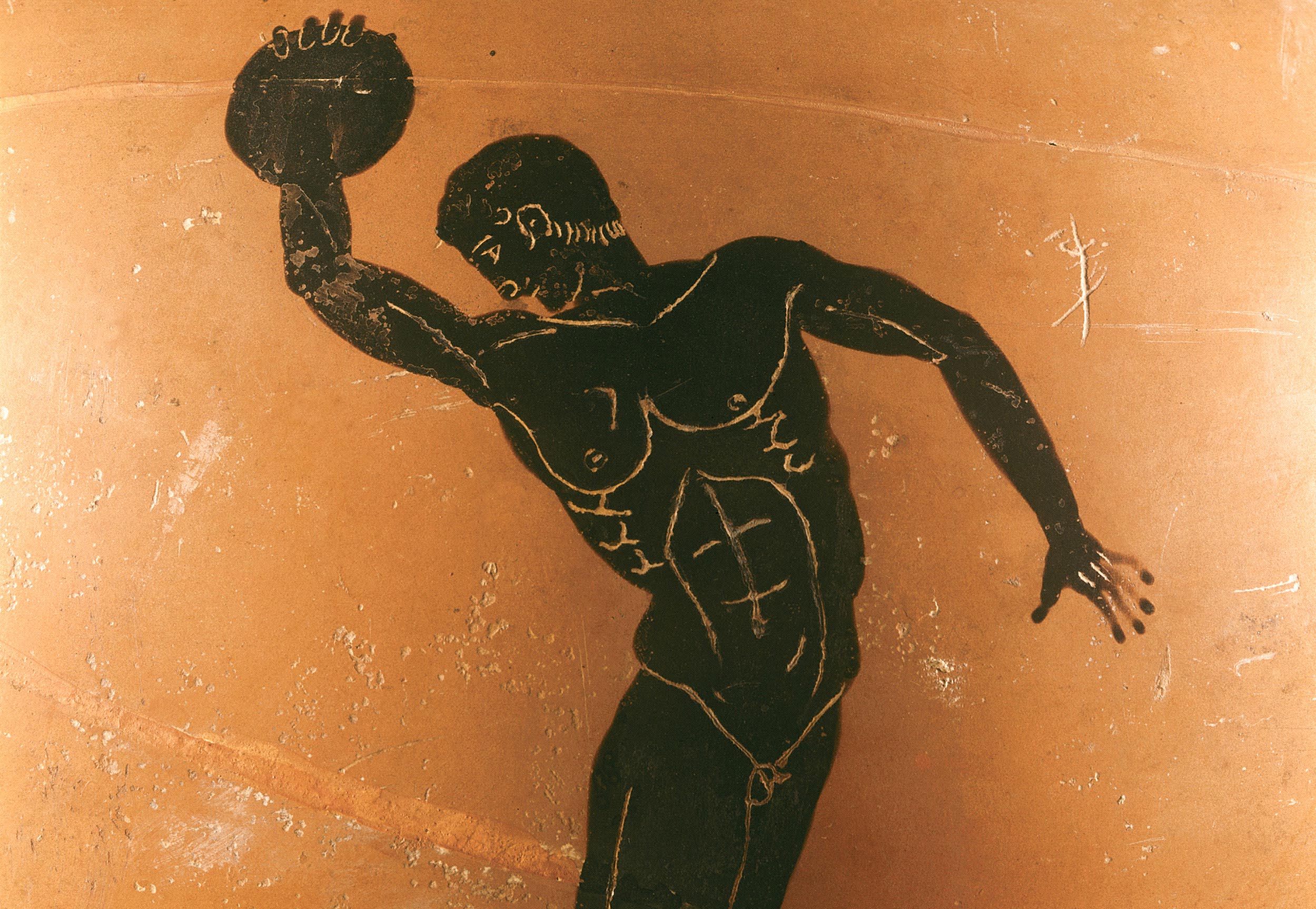
La quintessence du mouvement
Myron fut loué dans l’Antiquité pour son réalisme. Certes le Discobole démontre une recherche dans la représentation du corps humain encore jamais égalée à son époque. Mais n’y voyons pas cependant une œuvre réaliste. Sa composition est extrêmement réfléchie, s’inscrivant dans quatre triangles et deux cercles. Choisissant en apparence l’instant privilégié où le mouvement s’inverse, mais traduisant en réalité plusieurs positions successives du discobole, l’artiste nous donne à voir un idéal d’athlète, révélant ainsi la quintessence de son art.

Un symbole olympique victime d’un détournement nazi
Dès l’origine, la statue devient l’un des symboles des Jeux. Elle figure sur deux timbres commémoratifs des premiers jeux Olympiques internationaux d’Athènes de 1896 et sur une carte postale commémorative des Jeux de 1906. Cependant, à l’occasion des Jeux de 1936 organisés par l’Allemagne du IIIe Reich, un film de propagande met en scène le Discobole, qui se transforme en athlète vivant, incarné par l’Allemand Erwin Huber. L'idéologie nazie récupérait ainsi un chef-d'oeuvre de la sculpture grecque pour célébrer la suprématie de la race germanique. Séduit, Hitler acquiert en 1938 le Discobole Lancellotti, réplique romaine la plus complète de l’original grec, et l’offre au peuple allemand comme exemple de beauté aryenne. En 1948, la statue sera finalement rendue à l’Italie. Et sur l’affiche des jeux de Londres de la même année, c’est la copie du British Museum qui symbolise les Jeux, restituant au chef-d’œuvre de Myron sa vocation universelle.

Le saviez-vous ?
L’œuvre de Myron la plus prisée dans l’Antiquité fut la représentation d’une génisse en bronze. Elle semblait si fidèle à la réalité que son veau s’y serait trompé.
Sélection d'œuvres

D’après Myron, Discobole. Moulage, tirage intégral. Fin du XIXe siècle. Montpellier, musée des Moulages
1 sur 8
